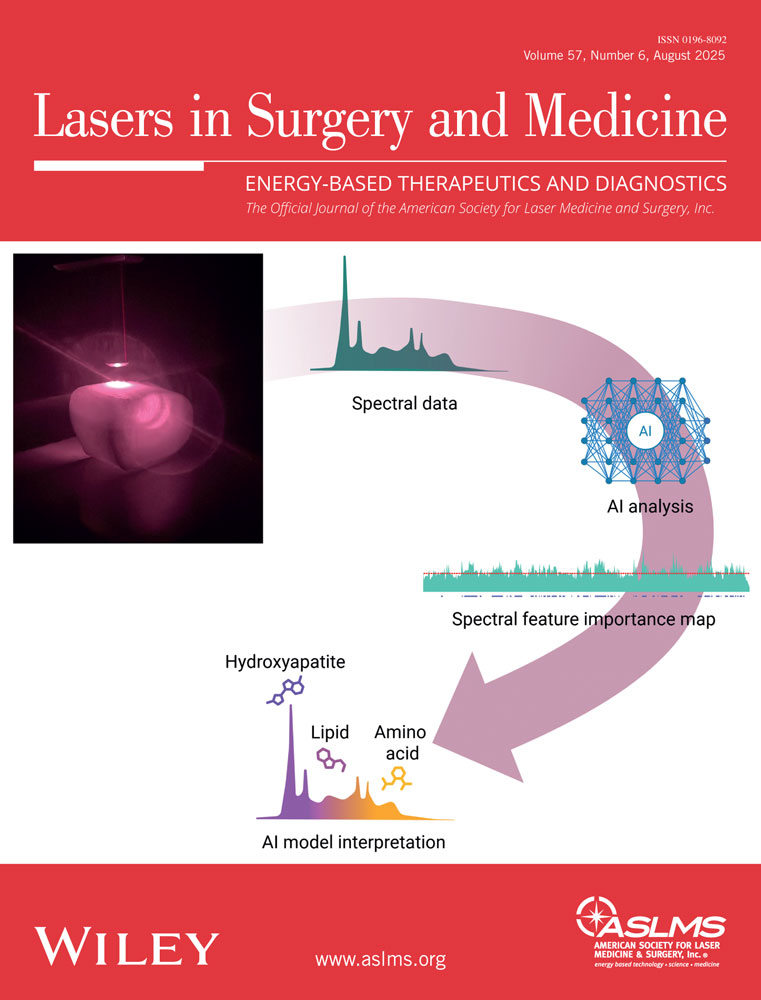Treatment of leg telangiectasia by using a long-pulse dye laser at 595 nm with and without dynamic cooling device
Abstract
Background and Objective
The long-pulse dye laser (PDL) at 595 nm and pulse duration of 1.5 msec has been shown to improve clearance of larger vessels such as those seen in leg telangiectasia. The objectives of this study are twofold. First, to determine the effect of the dynamic cooling device (DCD) in clearance of leg telangiectasia by using a long-pulse PDL at 595 nm. Next, to determine the effect of the DCD in reducing transient discomfort associated with treatment and in reducing epidermal damage (blistering, hyper/hypopigmentation, scarring) caused by the laser.
Study Design/Materials and Methods
Matched treatment sites were compared at energy densities of 20 and 24 J/cm2 with and without the use of the cryogen spray in 18 patients. In areas treated without the DCD, the laser pulse was delivered through a single layer of Spenco Second Skin. Patients received two treatments 6 weeks apart. Discomfort ratings, clearance of leg telangiectasia, and complications were assessed at 6 weeks, 12 weeks, and 6 months.
Results
A reduction in discomfort ratings was found in most patients using the DCD. Six-month follow-up data revealed at the 20 J/cm2 treatment sites, with or without the DCD, 76.9% showed greater than 50% clearance. At the 24 J/cm2 treatment sites, with or without the DCD, 84.6% showed greater than 50% clearance.
Conclusion
The long-pulse dye laser at 595 nm with a 1.5-msec pulse duration cleared leg telangiectasia an average of 67.5% with two treatments at 6 months. The major effect of the DCD was on pain reduction. There was no difference in clearance rates when using the DCD vs. cooled Second Skin. Further studies with longer cooling times with the DCD are needed to optimize treatment parameters. Lasers Surg. Med. 27:171–175, 2000. © 2000 Wiley-Liss, Inc.




